- Administrator
- Albums and Singles
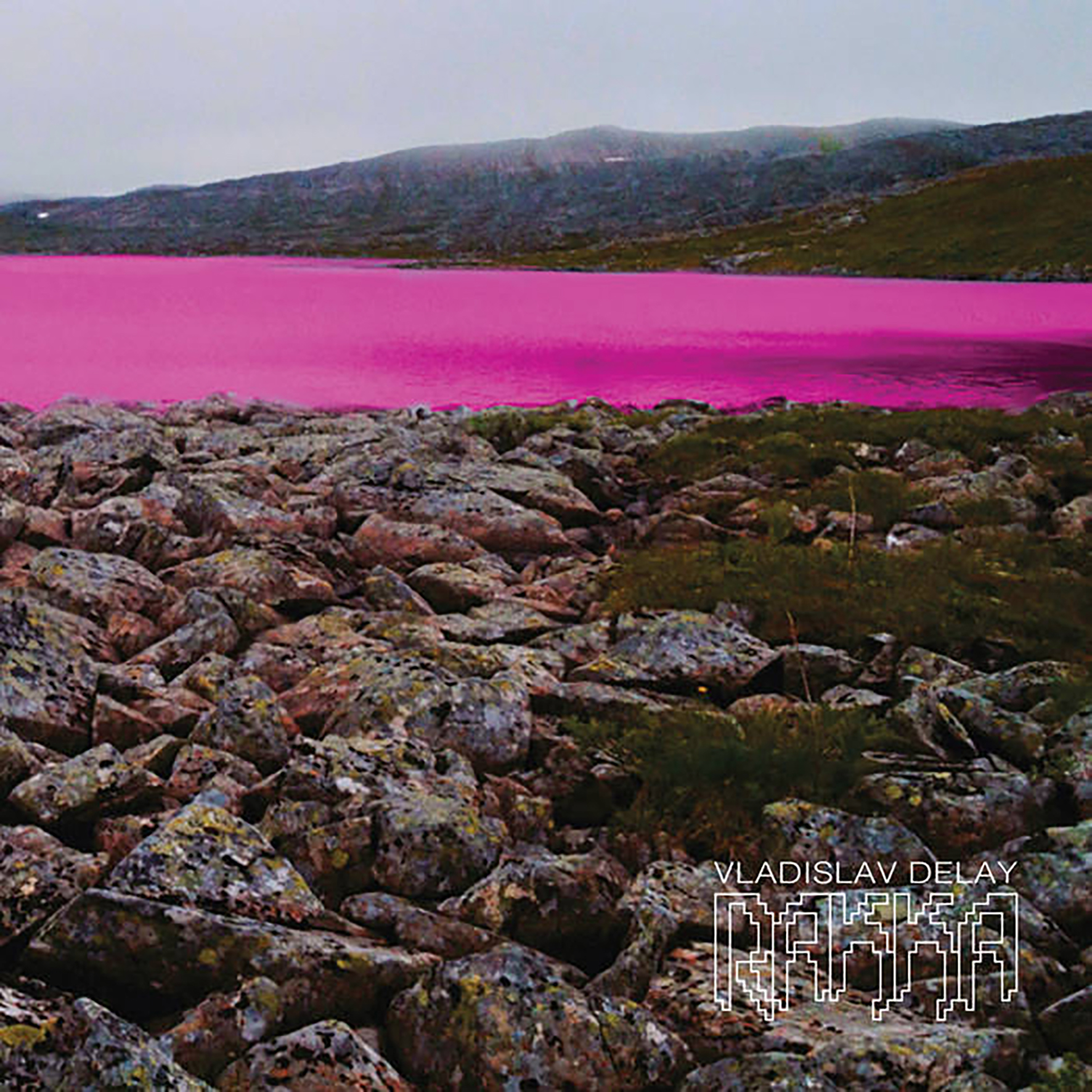 For the most part, I can always be relied upon to enthusiastically support any talented artist who leaves their comfort zone behind to explore increasingly weird and uncharted territory. I do have my weaknesses, however, and one of the major ones is my undying love for classic Mille Plateaux/Chain Reaction-style dub techno. Consequently, I am hopelessly fixated on early Vladislav Delay albums like Entain and the newly reissued Multila. That is a damn shame, as Sasu Ripatti has made quite a lot of wonderful and forward-thinking music since and I have definitely not dug into his later work nearly as much as I should. This latest album, the first new Vladislav full-length in roughly five years, is a particularly effective and timely reminder that I am an absolute chump for sleeping on many of Ripatti's major statements over the years. Rakka is quite an ambitiously intense and inventive affair, seamlessly blurring together elements of Tim Hecker-style blown-out ambiance, power electronics, techno deconstruction, and production mastery into an explosive tour de force.
For the most part, I can always be relied upon to enthusiastically support any talented artist who leaves their comfort zone behind to explore increasingly weird and uncharted territory. I do have my weaknesses, however, and one of the major ones is my undying love for classic Mille Plateaux/Chain Reaction-style dub techno. Consequently, I am hopelessly fixated on early Vladislav Delay albums like Entain and the newly reissued Multila. That is a damn shame, as Sasu Ripatti has made quite a lot of wonderful and forward-thinking music since and I have definitely not dug into his later work nearly as much as I should. This latest album, the first new Vladislav full-length in roughly five years, is a particularly effective and timely reminder that I am an absolute chump for sleeping on many of Ripatti's major statements over the years. Rakka is quite an ambitiously intense and inventive affair, seamlessly blurring together elements of Tim Hecker-style blown-out ambiance, power electronics, techno deconstruction, and production mastery into an explosive tour de force.
Given the number of varying guises that Sasu Ripatti has recorded under over the years, it is hopeless to try to define his aesthetic with any degree of accuracy.Hell, even this one project has undergone a constant and significant series of evolutions since it first began.That said, I still feel fairly comfortable in stating that Rakka is quite unlike anything that Ripatti has recorded previously.Much like some of Richard Skelton's stronger works, Rakka's creative leap forward was triggered by an unusual and unmusical inspiration, as Ripatti's muse was essentially the arctic tundra.He spent some time in the wilderness there and was understandably struck by the elemental power and brutality of the environment.In an abstract sense, Rakka is his attempt to replicate that experience to some degree.Obviously, pure sound has its limitations, so Ripatti's live sets are enhanced by an intense visual component crafted by his wife (Antye Greie-Ripatti/AGF), yet the album nevertheless feels quite heavy and fully formed on its own.In fact, it feels a hell of a lot like a rave being ripped apart by a howling blizzard.
Unsurprisingly, very little survives from that imaginary rave in recognizable form, but the deconstructed fragments of beats and chords still seem to form the album's backbone, albeit in ephemeral, corroded, and stuttering form.The title piece is an especially strong example of that aesthetic, as a pulsing chord struggles to be heard beneath a cacophony of skittering, distorted drums and a churning host of other strangled and static-ravaged sounds.All of the individual components of techno are present, yet they exist in a radically reworked context that sounds nothing like techno.Instead, it feels like a roiling, intense, and impressively hostile miasma of colliding sounds.  
While Ripatti’s stated intention was to strip away the "meaninglessness of hooks and melodies" and subvert conventional rhythms, he proves himself to be remarkably skilled and inventive in imbuing each of Rakka's seven pieces with its own distinctive character.Naturally, raw power does a lot of the heavy lifting that beats and hooks might have done, but there are still enough buried traces of songcraft to transcend anything resembling a noise album.Instead, Rakka is more like a series of meticulously crafted song fragments undergoing violent paroxysms.
I suppose roughly half of the album can be said to resemble variations of the title piece, though the variations are significant ones. For example, "Raataja" mingles its seething, pulsing drones with spasmodic eruptions of jackhammering kick drums, while "Raajat" resembles a steadily intensifying and enveloping roar disrupted by rhythmic loops of heavy machinery. Elsewhere, "Rakkine" ventures quite close to straight-up power electronics, as a half-pummeling/half-stammering rhythm is ravaged by bursts of extremely distorted vocals and harsh noise.Some of the other detours, like the more ambient "Raakile" and the near-blast beat crescendo of "Rampa" work a bit less well as individual pieces, but prove themselves to be very effective elements in enhancing the album's overall dynamic arc.Notably, the album’s finest piece, "Rasite," comes at the end of that arc, calling to mind a vintage Tim Hecker or Fennesz gem that has been enhanced with submerged dub-style sub bass, then completely decimated by strafing machine gun fire, an earthquake, and a volcano.   
If there is a caveat with Rakka, it is only that it falls more squarely on the "art" side of the "art versus entertainment" spectrum than most (or all) of Ripatti’s previous releases: it is not so much a fresh batch of songs as it is a sustained and intense experience.That is just fine by me, however, as Rakka is every bit as tightly edited and exactingly produced as the more accessible Vladislav Delay fare.In fact, I am legitimately amazed at how masterfully Ripatti was able to balance brute force and exquisite craftsmanship with this release, even while most nuance and subtlety is unavoidably eclipsed by its gales of noise and punishing flurries of percussion.Ripatti has always been a forward-thinking artist that played a significant role in shaping the direction of electronic music, but this album twists and breaks the form to such a degree that it will be quite a tall order for anyone else to follow him down this path.In fact, it is kind of a radical inversion of Ren Schofield's relentless and punishing Container project: Schofield is a noise artist who has made violence danceable, while Ripatti is a techno artist who has driven dance music completely off its rails, yet still somehow remains in total control of where that flaming and screeching metaphorical trainwreck is headed.
Samples can be found here.
Read More
- Administrator
- Albums and Singles

First vinyl release of Ak'chamel after a prolific cassette discography, The Totemist marks a new direction for the mysterious group. Equipped with studio quality recordings and a (somewhat) lighter tone, as opposed to the oppressively lo-fi sound the group is known for.
This is a deep psychedelic-folk album with hints of mysticism, some of which was written and recorded in a ghost-town in the Chihuahuan Desert in far West Texas - a place where the dead outnumber the living. Various overdubs and field recordings were captured in the historic Terlingua cemetery : an ancient burial ground filled with small grottoes and graves made of sticks and stones. This being the final resting place for miners who succumbed from illnesses derived from the toxic rare-earth element known as mercury.
More information can be found here.
Read More
- Administrator
- Albums and Singles
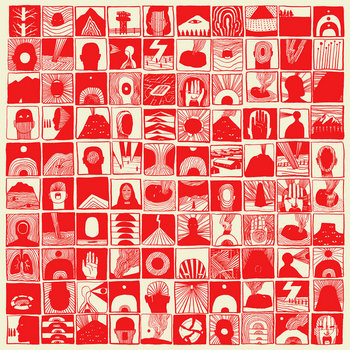
A harrowing layered work of solo saxophone and electronics, Descension is at once beautifully elegiac and unflinchingly primal. Patrick Shiroishi is one of the key artists to emerge from the current L.A. free improvisation avant-underground; his first vinyl release is a spiritual journey that reveals his deeply reflective and unique musical vision. Descension is a sonic meditation on the legacy of a dark history and its echoing relevance in the present era.
More information can be found here.
Read More
- Administrator
- Albums and Singles
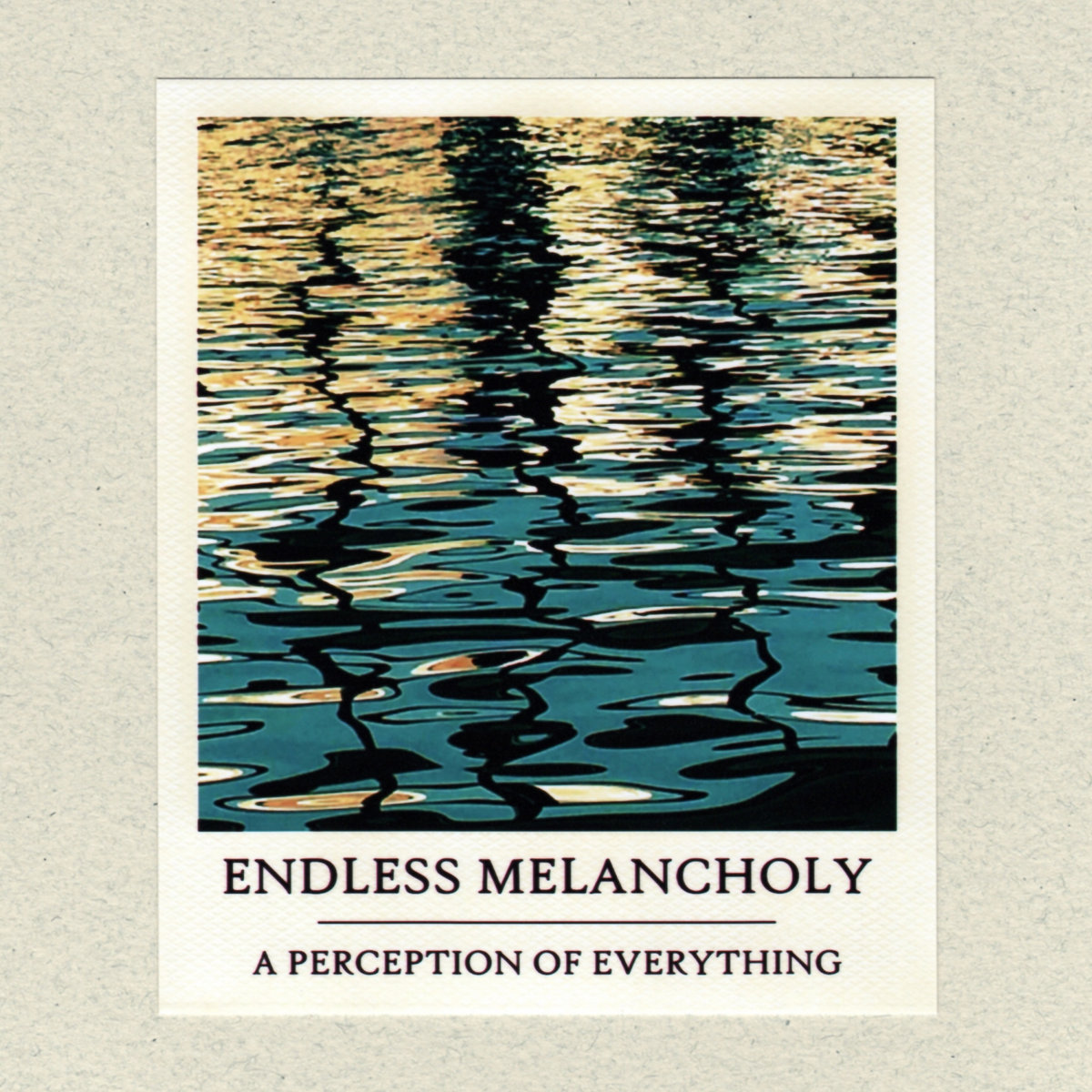
Sound In Silence is proud to welcome Endless Melancholy to its family, presenting his new album A Perception Of Everything.
Endless Melancholy is the self-descriptive music act of Oleksiy Sakevych, based in Kyiv, Ukraine. Since 2011 he has released six albums, a remix album, a compilation and many singles and EPs on labels such as Preserved Sound, Twice Removed, AZH Music, 1631 Recordings, p*dis, Dronarivm, Thesis, Past Inside The Present and his own Hidden Vibes. He has worked on collaboration/split releases with artists such as Desolate Horizons, Lights Dim and Hotel Neon, is also member of the post-rock band Sleeping Bear and has released music under the aliases of Moonshine Blues and bc_ranger.
A Perception Of Everything is the seventh full-length album by Endless Melancholy and his first for Sound In Silence. It is an album, inspired by traveling and visiting new places. It is made of field recordings made using a microcassette tape recorder, tape loops and synth pads. It is an album about the constant attempts to live in harmony with yourself and searching for your inner peace. About trying to shape your own perception of everything in this fragile and ever-changing world.
A Perception Of Everything is a sublime album of wonderful soundscapes, carefully mastered by George Mastrokostas (aka Absent Without Leave) and highly recommended for devotees of ambient pioneers such as Brian Eno, Harold Budd and Steve Roach.
More information can be found here.
Read More
- Administrator
- Albums and Singles

Sound In Silence is happy to announce the addition of Halftribe to its roster of artists, presenting his new album Archipelago.
Halftribe is the solo project of Ryan Bissett, an ambient/electronic music producer and DJ, born in Northern Ireland, residing in Manchester, UK. Influenced by other artists’ music, modern art, minimal photography, moods and emotions, since 2014 he has been producing his sublime music having released four albums and four EPs on labels such as Archives, Dronarivm, Vent Sounds, Dewtone Recordings and Silk Sofa Music.
Archipelago, Halftribe’s fifth full-length album and first for Sound In Silence, features eleven new compositions with a total duration of something less than 45 minutes. Bissett creates one of his best albums to date, skillfully blending together airy synths, soothing pads, hazy drones, delicate chimes, processed vocal samples, lo-fi plucked guitars, overlapping tones, looped crackles and calm field recordings.
Expertly mastered by George Mastrokostas (aka Absent Without Leave), Archipelago is a beautiful aural journey of blissful ambience, subtle textures, twinkling melodies and dreamy soundscapes which appeals to all fans of artists such as Fennesz, bvdub and The Green Kingdom.
More information can be found here.
Read More
- Administrator
- Albums and Singles
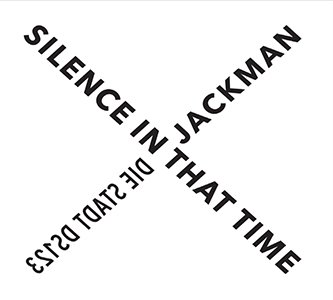 With a flurry of recent activity, including the Herbstsonne album also under his own name and Electric as Organum, David Jackman has been rather prolific in the past year. While I admittedly cannot say I know for sure what separates a David Jackman record from an Organum one (or why this one is credited to just his surname), Silence in that Time clearly shares some kinship with last year's Herbstsonne. Both feature his use of wide-open spaces, symmetrical song structures, and punctuations of massive piano chords, but the other details are where the difference lies.
With a flurry of recent activity, including the Herbstsonne album also under his own name and Electric as Organum, David Jackman has been rather prolific in the past year. While I admittedly cannot say I know for sure what separates a David Jackman record from an Organum one (or why this one is credited to just his surname), Silence in that Time clearly shares some kinship with last year's Herbstsonne. Both feature his use of wide-open spaces, symmetrical song structures, and punctuations of massive piano chords, but the other details are where the difference lies.
Like Herbstsonne, Silence is a single, long form piece (42 minutes) that features an intentionally reductionist palette of sounds.Jackman uses piano, a sustained organ/synthesizer bit, far off bells, and field recordings of birds.Again, it is not so much the variety of sounds that he is working with, but his placement of them, and the careful, considered production that surrounds them.
Big, booming piano chords stomp into the lengthy passages of silence, and then resonate slowly, giving an almost harmonium type quality to it.From this a bed of synth occasionally fills in the gaps, but Jackman has no qualms about letting silence take hold.From the distance the occasional tolling bell can be heard and the infrequent recording of birds sprinkled throughout that give an organic component to the otherwise empty space.
The specific sounds he works with on this record cast a bleaker feel than the otherwise more beautiful Herbstsonne.With the jarring piano outbursts and the far off bells, there is a sense of emptiness and isolation throughout.With the addition of birds, it is hard to not feel an overwhelming sense of dystopian desolation, and the distant tolling convey a malignant presence lurking just somewhere out of view.Intentional or not, I certainly appreciate this added dimension to the disc.
Being a fan of minimalism in general, Jackman’s work always encapsulates the best elements of that.Sounds are allowed to expand and sustain nearly indefinitely, allowing each deliberate component to become the focus before drifting away to be replaced with another.This deliberate sparseness also makes for an even more significant impact when volumes change or dynamics shift.Which is exactly why his work as himself and as Organum is always captivating.Silence in that Time has some consistent elements with the previous album, but never do the two feel interchangeable.Like that disc, there may not be a whole lot going on on the surface, but the attention it demands results in a consistently a fascinating experience.
samples:
 
Read More
- Administrator
- Albums and Singles

Creating what Iggy Pop described to Jim Jarmusch as "symphonies for people that don't have a lot of time," Sarah Lipstate has emerged as an innovative and defining voice in the world of music under the name Noveller. Wielding a guitar as her main instrument, Lipstate has pioneered a transcendent approach to composition through her mastery and integration of effects pedals and technology. Forming unexpected sonic routes, her songs are vivid and cinematic, telling intricate tales with each tone and swell.
Raised on a strict piano technique, the discovery of the guitar late in her teens allowed for an escape from formalism and unlocked the hidden realms of her creativity. Taking an anti-theoretical approach, suddenly music was no longer a series of notes, rests, and time signatures, but a means of intuitive expression. Her deepened interest in experimental music, fueled by the discovery of the bold noise of Sonic Youth, the epic scope of Glenn Branca, the delicate formularies of Brian Eno and the no wave discordance of Teenage Jesus & The Jerks, only furthered to inspire.
A yearning to explore and feed that creativity took her from Louisiana to Austin, then Brooklyn to LA. Arrow is her first album since the move to the edge of the canyons of Los Angeles, and you can hear the destabilizing effect this had on her in the music. Out of her comfort zone in a new city, with a rolling expanse in front of her and an urban sprawl over her shoulder, Lipstate built her new album as she contemplated this change in her life.
The resulting record feels as if it is filled with dreamscapes and contemplation intersecting with tension and drama, a journey that plays out over its dynamic sequence. Tracks like "Effektology" open up like a vivid view of the night sky, before the darkness settles in and envelopes you, finally quieting your racing mind and bringing about much needed slumber. "Canyons" pings about and stings at the mountainside with its syncopated melodic echoes. "Pre-fabled" walks you straight into the crashing ocean waves like a desperate cleansing. A mournful "Remainder" closes the proceedings, steadying itself for what the future might hold.
With her ability to add such unique sounds and textures, Lipstate has been sought out as a frequent collaborator, recently writing songs with Iggy Pop and performing as a member of his band on his worldwide tour. Past partners in crime have ranged from JG Thirlwell to Lee Ranaldo and she has performed as part of Rhys Chatham's Guitar Army, Nick Zinner's "41 Strings," Ben Frost's "Music for 6 Guitars," and Glenn Branca;s 100 guitar ensemble. She has also toured in support of big fans in St. Vincent, Wire, U.S. Girls, The Jesus Lizard and Helium.
Those prized abilities have also led her to her being a leader in the conversation around the gear that has unlocked the full range of her abilities. As she began posting videos of her explorations to social media, a dedicated and inquisitive audience emerged and continues to grow, as she appeared in magazines and documentaries. With Arrow, Lipstate has emerged with an album that is sure to delight and challenge all of her followers, as that fanbase widens further.
More information can be found here.
Read More
- Administrator
- Albums and Singles
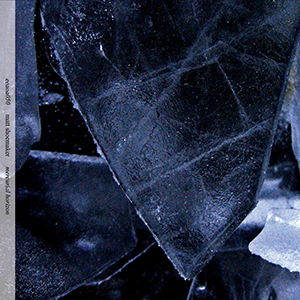 Before his untimely passing in 2017, Matt Shoemaker had a number of releases completed and ready to be released, including Mercurial Horizon. Recorded at various times between 2008 and 2012, during one of his most prolific phases, the album was completed five years ago, but just now being released. Split into two half hour pieces, it almost seems built for cassette, but thankfully presented as a gorgeous CD by the Elevator Bath label that does wonders to capture the depth and nuance of his work. Beautiful, unsettling, and bleak, it makes for an amazing disc that was worth the wait.
Before his untimely passing in 2017, Matt Shoemaker had a number of releases completed and ready to be released, including Mercurial Horizon. Recorded at various times between 2008 and 2012, during one of his most prolific phases, the album was completed five years ago, but just now being released. Split into two half hour pieces, it almost seems built for cassette, but thankfully presented as a gorgeous CD by the Elevator Bath label that does wonders to capture the depth and nuance of his work. Beautiful, unsettling, and bleak, it makes for an amazing disc that was worth the wait.
Shoemaker’s trademark use of field recordings and electronics appear throughout, but never being deployed in any easily identified form.Matt opens the first piece with a wet canyon of sound:a shimmering expanse covered in sticky reverb.Complex layers of sound define the piece, with a slew of weird, indistinct sounds and electronic pulses appearing throughout.A mysterious clanging and buzzing, serrated noises give a sense of menace that will soon take over, with a subtle, drifting melody that offsets the darkness.
It is an extremely dynamic work, but that sinister feel becomes even more notable when grinding noises and unnatural sounding bells toll away.Bubbling, organic textures and strange grinding layers keep the malicious sensibility in place, and a far off heartbeat like thud conjures some notable "strange thing in the darkness" moods.Coupled with the murky, jungle-like field recordings (not unlike his work with Indonesian field recordings as Fosil Sangiran), it ends on an extremely unsettling note.
This carries directly over to the second piece, which is comparably more open but no less dark.The mix is wide open at the onset, with processed animalistic noises rising up as sinister outbursts throughout.He retains this pattern for a while:passages of near silence interrupted by creepy noises and a faster rate, with additional electronics coming in to maintain that feel of looming menace.That oppressive jungle feel comes back with some excellent crunchy textures, punctuating that alien, unnatural feel.
As the piece progresses, modular electronics do an impressive imitation of a helicopter signal a transition to different, but no less unsettling environment.The mix collapses, leaving only a frigid tinnitus drone, which fits his photographs of ice that adorn the digipak perfectly.There is a distant shimmer of light in the horizon, but the isolation is strong and cold.A strange clanking noise appears and the mix becomes even denser, again capturing that feel of something that is out of sight closing in, and he retains that sense of danger all the way to the end.
It is quite sad that Mercurial Horizon was not released before Matt Shoemaker's passing, because the depth and fully realized nature of this work would surely have garnered him some well-deserved accolades.Every one of his works that I have had the pleasure of hearing have been amazing, but everything seems to mesh beautifully here.His field recording treatments, unique electronic experimentation, and ability to conjure a heavy, cinematic mood throughout make this disc especially unique.While I hope this is not necessarily the last of his completed works that we will hear, if it is, it is a brilliant postscript to a tragically short career.
Read More
- Administrator
- Albums and Singles
 The first foray into Warren Defever's teenage tape archive (last year's All The Mirrors in the House) was an absolute revelation that actively courted disbelief, but this second installment is a bit more modest in its scope. As a result, Return To Never unavoidably feels a bit underwhelming and insubstantial by comparison, but it is still a likable album that scratches roughly the same itch, as I am very much a fan of Defever's homespun, early lo-fi experiments. While there are still a healthy number of melodic guitar pieces strewn throughout the album, Return to Never is generally a more experimental and abstract affair than the previous volume. Phrases like "analogue murk" and "greyscale industrial drone" are tossed around in the album's description and they are fairly apt: if All The Mirrors captured a teenage Defever accidentally inventing shoegaze, Return to Never captures him accidentally mirroring the sounds of the early '80s noise underground (or at least calls to mind someone playing shoegaze-style guitar over such a tape). The warmer, more "ambient" passages still tend to be the best ones, but if some moments from Return to Never had found their way onto an early Broken Flag tape, I doubt anyone would have blinked or raised an eyebrow.
The first foray into Warren Defever's teenage tape archive (last year's All The Mirrors in the House) was an absolute revelation that actively courted disbelief, but this second installment is a bit more modest in its scope. As a result, Return To Never unavoidably feels a bit underwhelming and insubstantial by comparison, but it is still a likable album that scratches roughly the same itch, as I am very much a fan of Defever's homespun, early lo-fi experiments. While there are still a healthy number of melodic guitar pieces strewn throughout the album, Return to Never is generally a more experimental and abstract affair than the previous volume. Phrases like "analogue murk" and "greyscale industrial drone" are tossed around in the album's description and they are fairly apt: if All The Mirrors captured a teenage Defever accidentally inventing shoegaze, Return to Never captures him accidentally mirroring the sounds of the early '80s noise underground (or at least calls to mind someone playing shoegaze-style guitar over such a tape). The warmer, more "ambient" passages still tend to be the best ones, but if some moments from Return to Never had found their way onto an early Broken Flag tape, I doubt anyone would have blinked or raised an eyebrow.
In Dominic Foster's haunting and beautiful short promotional video for Return to Never, the album is described as the work of a "compulsive 13-year-old with no social life" that has now been "blended together with an adult hand."Such a description could certainly apply to All the Mirrors in the House as well, but it definitely feels quite a bit more believable this time around, as most of these pieces plausibly sound like the cooler excerpts culled from hours and hours of precocious experimentation with effects and field recording.Consequently, I do not at all envy Shelley Salant for being the one who had to listen to all of the indulgent juvenilia that must have surrounded the gems that ultimately wound up on this album.I am quite curious about what the original context was for some of the briefer pieces though.For example, the gorgeously quivering shimmer of "Chords" only lasts about thirty seconds, which makes me wonder what happened to the rest of the piece and how badly it must have derailed to leave behind such a brief snatch of beauty once the editing was complete.I feel similarly about the album's most improbable piece, "From The Night Tape," which feels both fully formed and years ahead of its time: a blown-out bass thrum and out-of-phase, backwards high hats propel a swirling miasma of shoegaze guitars for roughly thirty seconds and then it all vanishes abruptly.Obviously, the perplexing brevity of some of the album's strongest pieces creates some enticing mysteries, yet "Night Tape" goes one step further in making me wonder why such an immediately gratifying and cool aesthetic was not explored further or revisited: there are fourteen other songs on the album, yet none of them flirt with beats or grooves again.My guess is that "Night Tape" was either a newly assembled collage of multiple pieces or that it immediately predated the blossoming of His Name is Alive into a more song-based project.
For the most part, however, Return to Never is devoted to a series of atmospheric vignettes that bounce between dreamlike guitar soundscapes and hiss-soaked field recordings of crashing waves and heavy machinery.Both sides have their merits, of course, but the album's more melodic pieces are definitely the ones that play more to Defever's strengths.The best of the lot is the swooning "To Remember," which takes a woozily lovely, seesawing loop and ravages it with sputtering snarls of static.The shimmering and chiming drift of "Guitar Echo" is quite nice as well (albeit a bit unformed/improvisatory by comparison).There are also a handful of pieces that combine gently swaying soft-focus guitar drones with primitive sound collage, though the inherent hiss and murk of recording on a boombox tends to overpower the nuances of the latter.Still, some are quite good, such as the lovely and meditative title piece, which is slowly eclipsed by crashing waves that segue into the similarly fine "Lake Night."
"My Thoughts to Thee are Drawn" is another sublime treat, as languorous, hazy strings drift over something that sounds like a field recording of a passing train heard from underwater.The album also features a pair of unexpected and abrasive surprises at the end in the form of "White Snake" and "Gone."Neither is particularly substantial, sadly, yet both share an endearing "anything goes" sense of gleeful derangement.In the former, a rock frontman asks a cheering crowd how many of them are going to see Whitesnake that weekend before the piece plunges into a simmering maelstrom of buzzing, pulsing, and crackling noise.That cacophony then segues into a half-gnarled/half-anthemic piece that calls to mind a Jesus and Mary Chain gig in which all of the band’s amplifiers explode as soon as they launch into their first song, leaving only a muscular bass line in a squall of harsh feedback and howling noise.
My only real grievance with Return to Never is that "To Remember" is the only piece that feels like a strong, stand-alone "single."Obviously, that is somewhat unavoidable given the nature of this collection, but All the Mirrors in the House managed to pull off the illusion of being a substantial, deliberate, and thematically focused whole anyway.I imagine that is an incredibly hard trick to repeat though and Defever admittedly does a fine job editing these disparate sketches together into something that flows quite well.In fact, it could be argued that he actually did quite an amazing job of curating and editing these pieces, as this album has distinct "winter" feel that is very different from its more autumnal and sun-dappled predecessor.Maybe this album is every bit as good as Mirrors and I just do not like winter as much as I like fall.Or maybe I am projecting all of this.Anything is possible.Only Defever knows what his intentions were, of course, but Return to Never does feel like its own statement rather than a lesser version of Mirrors.Mike McGonigal is not far from the mark when he claims in the liner notes that all of these pieces would probably be considered "lost classics of modern minimalism" if they could be stretched and expanded to fill a whole side of vinyl.I only take issue with the "all" part of that statement, as I probably would have loved this album if two or three of its best pieces had been stretched out for 10 of 15 minutes each.Alas.Given all of my unanswered questions and unmet aspirations for this album, I am very curious to see what the next (and final) installment of this series will be like, as it will clarify once and for all whether or not Mirrors got the lion's share of teenage Defever's best moments or if he still has a mountain of great unreleased material that he is merely categorizing by mood.In any case, I enjoy Return to Never, but it is not quite on the same level as previous bombshell compilations like King of Sweet or Mirrors, as Defever has set a very high bar for how truly wonderful his vault scraping can be.
Samples can be found here.
Read More
- Administrator
- Albums and Singles


Horsey & Sleep Has His House come in the form of expanded DLP and 2CD editions, remastered from the original analogue and digital master tapes, including previously unreleased mixes and versions of classic songs.
David Tibet, writes of both albums:
"Born after the Death of my father, SLEEP HAS HIS HOUSE was a Threnody and a Requiem to him and a series of blinks at the passing of TREE and BIRD. Down by the River, Beside the Water, and none of these run ETERNAL, except the Immortal Bird, as high as sky. Now, in BED with House of Mythology, C93 are OverMoon to SLEEP again."
"My one Leg was in Tokyo, and my other Leg was in London, and I watched in Horror the Horsies rage by and I flew by and the Corn waved and the Trees bowed. This was BaddenedBlackenedTime, as I watched friends spin down and fall and fall—it is hard to keep riding when the structure is sliding. So that’s what I called HorseyTime, and I can still hear their fear. Now, in SADDLE with House of Mythology, C93 are OverMoon to RIDE again with this extended reissue."
Each 2xLP set is released as a limited edition in colored opaque vinyl, as well as a standard edition in a different-colored transparent vinyl, with both editions packaged in a single sleeve with a thicker 5mm spine. There is also an accompanying lyric-insert, as was the case when Sleep Has His House was originally released.
The 2xCD is packaged in a gatefold mini-LP sleeve with deluxe card sleeve, containing a lyric booklet.
More information can be found here.
Read More
- Administrator
- Albums and Singles

To Kiss Earth Goodbye, Teleplasmiste's second full album, sees their sound-vision expanding and deepening, phantasmally and fantastically, opening onto thrilling new vistas of euphoria. The music is informed by a deep awareness and respect for prior esoteric traditions and counterculture currents, but forges a new and fertile synthesis very much its own.
The mesmerizing cover art is by spirit painter and medium Ethel Le Rossignol, whose 1933 book of spiritualist teachings lends its name to the album’s second track: "A Goodly Company." Another composition, "An Unexpected Visit," incorporates a previously unheard trance recording of occultist Alex Sanders (aka the UK's "King of the Witches"), made by Sanders himself in the 1980s.
More information can be found here.
Read More

